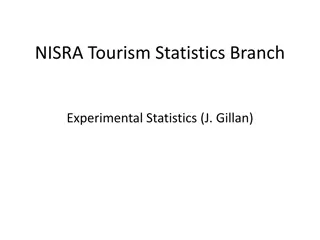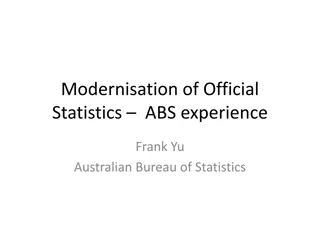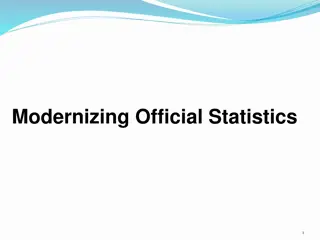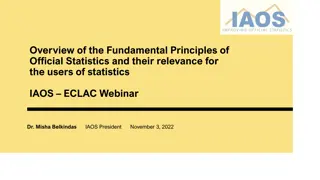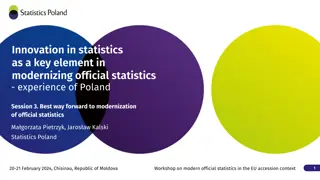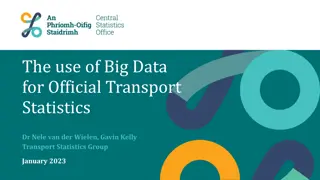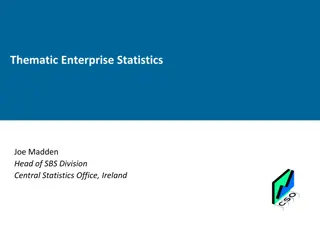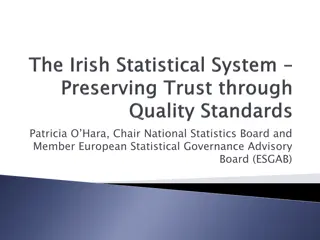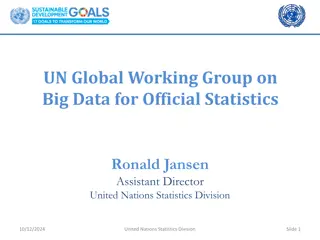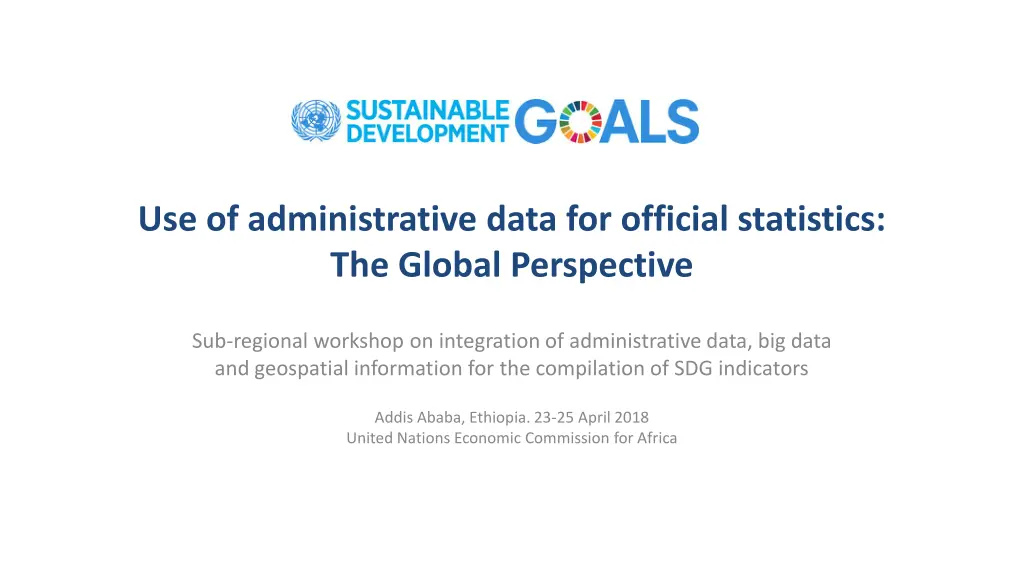
Integration of Administrative Data for Statistical Compilation
Explore the benefits and process of integrating administrative data into statistical production, including the types of administrative data, transformation methods, and preconditions for effective integration. Learn how this approach leads to reduced costs, improved data coverage, and enhanced statistical quality.
Download Presentation

Please find below an Image/Link to download the presentation.
The content on the website is provided AS IS for your information and personal use only. It may not be sold, licensed, or shared on other websites without obtaining consent from the author. If you encounter any issues during the download, it is possible that the publisher has removed the file from their server.
You are allowed to download the files provided on this website for personal or commercial use, subject to the condition that they are used lawfully. All files are the property of their respective owners.
The content on the website is provided AS IS for your information and personal use only. It may not be sold, licensed, or shared on other websites without obtaining consent from the author.
E N D
Presentation Transcript
Use of administrative data for official statistics: The Global Perspective Sub-regional workshop on integration of administrative data, big data and geospatial information for the compilation of SDG indicators Addis Ababa, Ethiopia. 23-25 April 2018 United Nations Economic Commission for Africa
Compilation of statistics based on administrative sources is increasingly common To create/improve/maintain base statistical registers To produce statistical outputs directly or in combination with other data sources To assess and improve quality of statistical outputs (e.g., cross- validation through microdata comparisons)
Benefits of integrating administrative data sources into statistical production process Reduced cost Reduced response burden Improved data coverage and availability Ability to compile disaggregated statistics Often, the results of sample surveys pertaining to population sub-groups cannot be presented due to unacceptably large sampling error Improve the quality and efficiency across the entire statistical production system
Types of administrative data Data reported to administrative authorities by individual persons / legal entities for legal compliance or to access government services Data recording decisions made by administrative authorities Data generated by administrative authorities to support planning, implementation, monitoring and evaluation of administrative programmes
Transforming administrative data into statistical data Data from administrative sources needs to be adapted and processed to make it suitable for statistical compilation Transform administrative populations into statistical populations Transform administrative entities into statistical units (e.g., households, enterprises) Transform administrative variables into statistical variables Sample surveys Statistical Outputs Adminis- trative registers Statistical registers Census
Preconditions for effective integration of administrative data sources Quality of administrative systems Coverage, timeliness, reliability, documentation System of national identity numbers For natural and legal persons, as well as of locations Sound data governance For data access and collaboration with administrative authorities Statistical integration frameworks Base statistical registers Standard statistical classifications
System of national identity numbers The same identity number should follow each person, enterprise or location over its life time Identity numbers should have no relation to any characteristics of the objects they identify A good system of national identity numbers improves efficiency of both administrative and statistical production systems, and allows to link records and make comparisons
Data governance Legal framework determines What data are generated by administrative systems, and how it is reported/recorded The right to use data from administrative systems for statistical purposes The authority to match data from different sources Accountability mechanisms for data quality and the protection of data privacy and confidentiality
Data governance Institutional arrangements enable NSOs to maintain close and long-term relations with administrative authorities High-level contact to promote strategic changes in administrative systems with a view to improve statistical production Technical-level cooperation to understand how administrative systems are organized Coordination of changes in administrative and statistical systems
Base statistical registers Together with standard classifications, they constitute the backbone of the national statistical infrastructure: Define statistical units and populations to be used across the entire statistical system Provide sampling frames for collection of survey data Are a primary source for demographic statistics Establish links between different sources of data
Base statistical registers Population register Identification of population units (persons, households, families ) Relationships among population units (partners, ascendants, descendants) Demographic characteristics (age, sex, marital status ) Vital events (live births, deaths, marriages, divorces, adoptions, ) Business register Identification of business units (enterprise, establishment, ) Relationships among business units (subsidiaries, head offices, ) Demographic characteristics (size, main economic activity ) Business demographic events Cadaster / real-estate register Identification of real estate units (land property, buildings, and dwellings, ) Location (addresses, geographic coordinates, )
Steps to integrate administrative data in official statistics 1. 2. 3. 4. 5. Inventory of all administrative registers available Mapping of administrative entity types to statistical units Mapping of administrative variables to statistical variables Establishing relationships among administrative registers Development of statistical registers Base statistical registers Primary statistical registers (directly based on administrative registers) Integrated statistical registers (derived from primary registers) Linking microdata from statistical registers and other data sources 6.
References Register-based Statistics: Statistical Methods for Administrative Data. Wallgren A. and B. Wallgren (2014). John Wiley & Sons Register-Based Statistics in the Nordic Countries: Review of Best Practices with Focus on Population and social Statistics. United Nations Economic Commission for Europe (2007) Principles and Recommendations for a Vital Statistics System, Rev. 3. United Nations (2014) Section 2.II - Civil Registration as a source of vital statistics Section 2.III - Use of population registers for vital statistics purposes Guidelines on Statistical Business Registers. United nations Economic Commission for Europe (2015) Guidelines for Building Statistical Business Registers in Africa. African Development Bank (2014)






